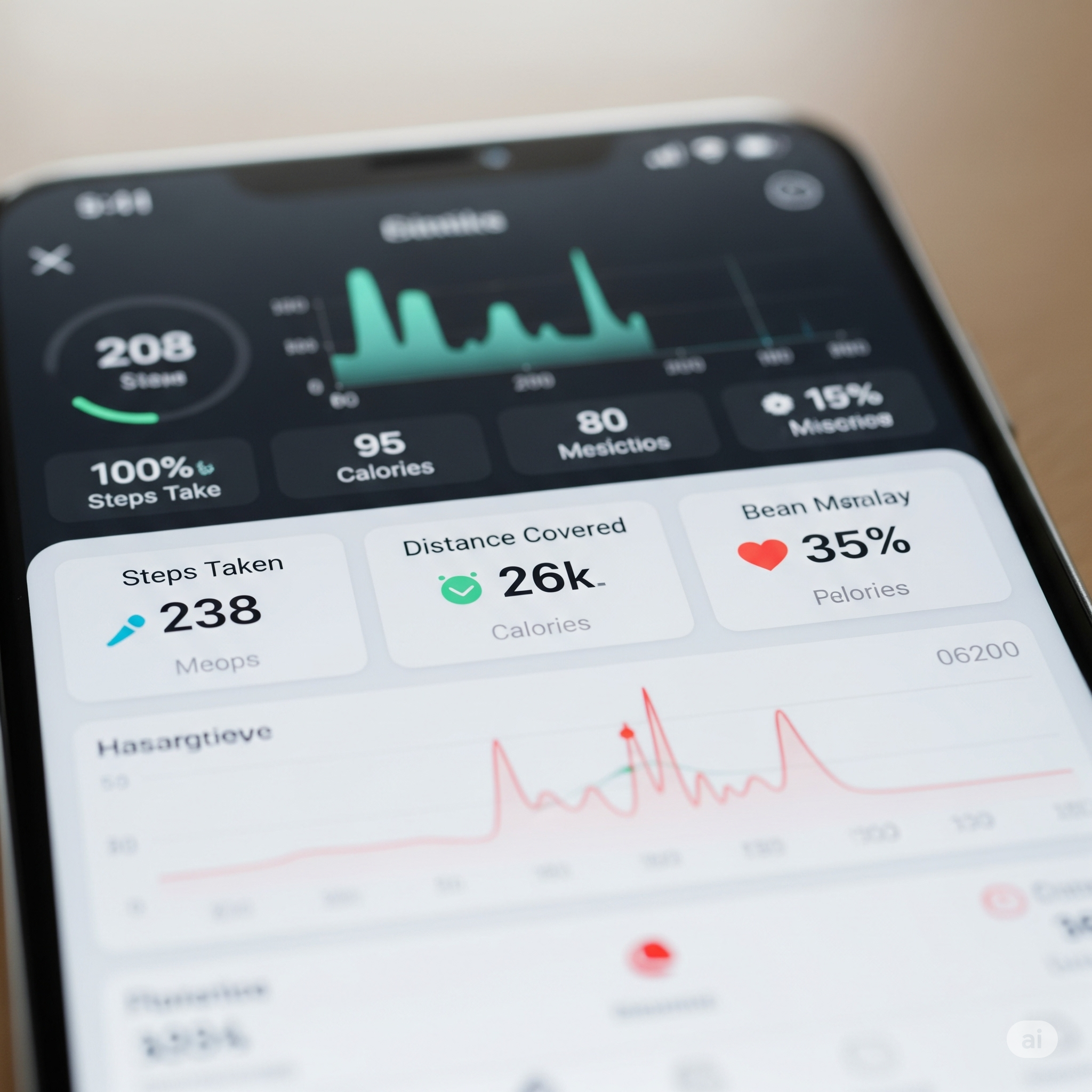Introduction to Fitness Tracking Apps
In recent years, fitness tracking applications have become an integral tool in the health and wellness landscape. The emergence of technology has revolutionized how individuals monitor their fitness goals, in turn promoting a culture of health consciousness. With smartphones and wearables, users have access to an array of applications designed to track various aspects of their physical activity, nutrition, and overall wellness. This shift reflects a growing trend where technology is leveraged to support more personalized and effective health management.
The importance of fitness tracking apps lies in their ability to provide real-time feedback, enabling users to assess their performance and adjust their routines accordingly. These applications typically offer features such as step counting, calorie tracking, exercise logging, and even heart rate monitoring. By meticulously recording data, users can identify patterns in their behavior, which helps to establish achievable goals and maintain motivation. Furthermore, the integration of nutritional tracking allows individuals to gain insights into their dietary habits, thus supporting healthier choices.
Moreover, fitness tracking apps often incorporate personalized insights driven by algorithms that analyze user data. This capability empowers users with tailored recommendations for exercises, meal plans, and recovery strategies. The gamification elements present in many of these applications—such as challenges and rewards—further enhance engagement, making the journey toward fitness more enjoyable. As more individuals acknowledge the significance of maintaining a balanced lifestyle, the role of fitness apps becomes increasingly crucial in aiding users to stay accountable and committed to their health objectives.
In essence, the use of fitness tracking applications is not merely a trend but a transformative movement aimed at enhancing individual workout experiences. As we approach 2025, the advent of innovative features and technologies in the fitness app ecosystem indicates that these tools will play an even more significant role in promoting holistic health and wellness practices.
Key Features to Look for in Fitness Apps
In the ever-evolving landscape of fitness technology, selecting the right app can significantly impact your fitness journey. A well-designed fitness app should boast several key features that enhance usability and effectiveness. One of the foremost elements to consider is a user-friendly interface. An intuitive layout not only minimizes the learning curve for newcomers but also ensures that users can easily navigate the app and access its various functionalities. This feature is especially important for those who may not be very tech-savvy yet wish to utilize digital tools for tracking their fitness progress.
Another critical characteristic is the app’s integration with wearable devices. Many individuals invest in smartwatches and fitness trackers to monitor their activity levels. A fitness app that seamlessly syncs with these devices can provide real-time data, allowing users to have an accurate picture of their performance. Such integration facilitates a more holistic approach to fitness, encouraging users to stay on track.
Personalized fitness plans are also vital for a compelling fitness app. Users should have the option to tailor their workout regimens based on personal goals, fitness levels, and preferences. Apps that offer this feature can cater to diverse lifestyles, whether someone is engaging in a rigorous weightlifting program or pursuing a more gentle yoga practice. Additionally, nutrition tracking is becoming increasingly necessary for those who are serious about their health. Comprehensive apps allow users to log their meals, track calorie intake, and gain insights into nutritional gaps, making it easier for them to achieve their fitness goals.
Lastly, community support is an often-overlooked feature that can significantly motivate users. Engaging with a community of like-minded individuals through the app fosters an encouraging environment where users can share experiences, challenges, and successes. When considering a fitness app, it’s essential to evaluate these key features to ensure it aligns with your personal fitness journey and supports long-term success.
Top Fitness Apps for 2025: A Comprehensive Review
As the fitness landscape continues to evolve, the year 2025 brings forth an array of innovative fitness apps designed to help users track their progress effectively. Below, we examine five of the top fitness applications based on their unique features, user experience, compatibility, pricing models, and user reviews.
1. **MyFitnessPal**: Widely regarded as a comprehensive app for nutrition and fitness tracking, MyFitnessPal allows users to log their food intake and exercise routines effortlessly. With a vast database of food items and the ability to integrate with various fitness devices, it helps users maintain a balanced diet and achieve their fitness goals. Many users appreciate its easy-to-use interface and community support features, fostering motivation and accountability.
2. **Strava**: Popular among runners and cyclists, Strava offers advanced tracking capabilities that go beyond basic metrics. Users can monitor their routes, analyze performance trends, and participate in challenges with friends or the Strava community. The app’s unique segment feature allows users to compare their times on specific portions of trails, making it an engaging platform for competitive fitness enthusiasts.
3. **Fitbod**: Ideal for strength training, Fitbod customizes workout plans based on user progress and available equipment. As a result, individuals can target specific muscle groups effectively while preventing overtraining. With an appealing user interface and automated tracking, Fitbod stands out for gym-goers looking to optimize their workouts without the hassle of manually logging each session.
4. **Nike Training Club**: This app features a diverse range of workouts designed by professional trainers, catering to all fitness levels. Users can access detailed video demonstrations, progress tracking, and personalized training plans. The free version is robust, while the premium membership offers advanced programs focusing on performance improvement and recovery.
5. **Lifesum**: Stringently focused on dietary habits, Lifesum assists users in establishing healthy eating patterns alongside their fitness routines. The app includes meal plans, recipes, and grocery lists tailored to personal goals, supporting users in tracking not just workouts but also nutrition effectively. Its integration capabilities with other fitness apps enhance its functionality.
In conclusion, these fitness apps for 2025 provide excellent tools for tracking various fitness aspects, promoting consistency, and fostering motivation among users. Each app caters to different needs, whether one seeks to improve strength, enhance endurance, or refine dietary habits. Choosing the right app can significantly contribute to achieving personal health and fitness milestones.
Future Trends in Fitness Tracking Technology
As we approach 2025, the realm of fitness tracking technology is anticipated to undergo significant transformations, largely driven by advancements in artificial intelligence (AI) and innovative user experiences. One prominent trend is the integration of AI into fitness apps, which allows for personalized coaching tailored to individual fitness levels, goals, and preferences. These intelligent systems will analyze user data to deliver customized workout plans, real-time feedback, and adaptive training regimens, enhancing both engagement and efficacy in achieving fitness objectives.
Moreover, virtual and augmented reality (VR and AR) technologies are set to revolutionize the way individuals engage with fitness routines. By creating immersive environments and experiences, these technologies offer users a chance to participate in workouts that feel more interactive and enjoyable. Imagine being able to join a high-intensity interval training (HIIT) session in a breathtaking virtual setting, or using augmented reality to overlay workout metrics onto your environment. Such advancements will not only make workouts more fun but also facilitate greater motivation and adherence to fitness programs.
The impact of social media on fitness communities continues to expand, with platforms increasingly providing tools for users to share their progress, seek inspiration, and engage in friendly competition. As people become more connected, the power of community-driven support is likely to enhance overall fitness motivation. Social media will facilitate collaborations among fitness enthusiasts, where workouts, challenges, and achievements can be easily shared, fostering accountability and camaraderie as users strive toward their fitness goals together.
As technology progresses, it is crucial for fitness enthusiasts to stay informed about these emerging trends. By leveraging advancements in AI coaching, VR experiences, and social integrations, individuals can effectively enhance their fitness tracking practices, ensuring that they remain on a path to achieving their desired health and wellness objectives by 2025.







